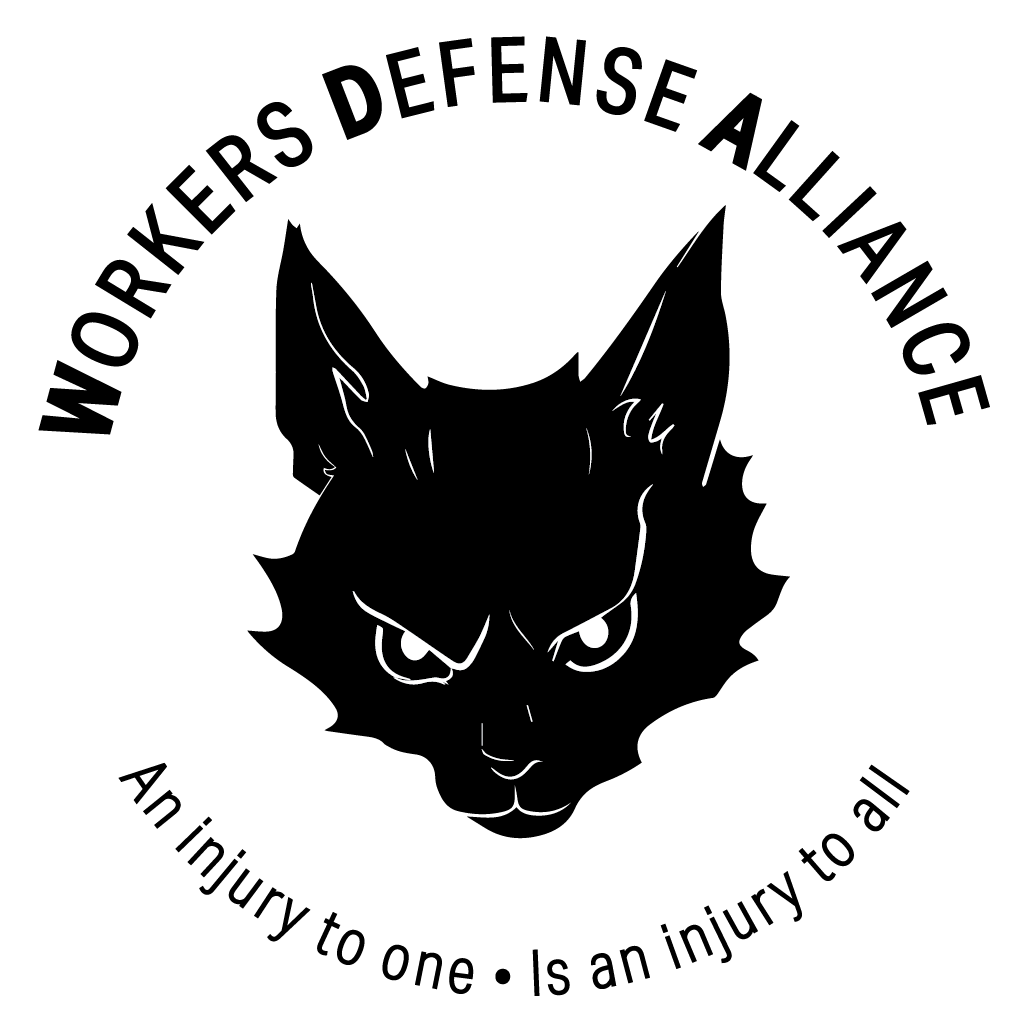
Mac, Truck, Slick - Members of the Rock Steady Alliance
In the wake of George Floyd’s murder and the resulting Uprising in the summer of 2020, neighborhoods in South Minneapolis were thrust into a world without state imposed policing. While this in some respects was a welcome change of life with less fear of police violence, it did, however, come with its own challenges. When communities are forced to not only imagine a world without police, but begin living one in the span of a couple of days, problems can arise given the nuanced nature of various community members’ interests and the lack of a structure to mediate amongst these groups.
A prime example of such a conflict occurred on the 2900 block of 18th Avenue in the Powderhorn neighborhood. This block has been a frequently used area for the use and sale of drugs for years, and in the absence of police and their “War on Drugs”, drug sellers and users saw an opportunity to stake a claim on the block, but in this pursuit, threatened the residents’ well-being. When events turned violent and residents, including children, were openly threatened with physical violence and firearms, the block realized they had to band together in order to protect their community. A few folks began organizing and taking a stand against the violence, including a resident arming himself and firing into the air above the perpetrators. When this confrontation brought a more concerted effort to control the block on the part of the harm-doers, the block called a meeting and invited two future founding members of Rock Steady Alliance (RSA) to consult on the situation given their backgrounds in security and their role in protecting their community from the white supremacist incursion during the Uprising. Barricades were constructed at each end of the block and a 24 hour security detail composed of block residents and future RSA members was instituted to monitor the escalating threats and activity.
Following the formation of RSA in the ensuing weeks, RSA members became more actively involved, at the request of the residents. After speaking with several folks living on the block and assisting with their security detail, RSA asked how they could be of use in the long-term, as the toll exacted on many of the families from the day-in, day-out security was proving unsustainable. Seeing as these events were symptoms of a greater systemic problem of racism, poverty, and the criminalization of substance use imposed by a largely apathetic city government, there were limited prospects for a solution, but after RSA members assisted with overnight security and began observing the activity, they realized that much of the appeal of the block was that it provided a direct route from the Greenway to the the corner store. After investigating the store, RSA members noticed that all the gear needed to use or sell narcotics: torches, baggies, glass pipes, scales, screens, etc. were being sold. Two RSA members with experience working with those with substance use issues and those involved in the urban survival economy determined that this corner store may have a prominent role in the unwanted activity.
This discovery was a crucial turning point in RSA’s involvement with the situation on 18th Ave. The fact that a local business owner was shamelessly profiting off of both the opportunism of drug sellers and the struggle of some drug users, was illuminating and seemed to be a logical target to help resolve this conflict. While harm reduction is an important aspect of community health and dealing with substance use, the corner store made a conscious decision to benefit from the situation without taking any responsibility for the peripheral violence and exploitation that can occur with this culture. After informing the residents of their observations at the corner store, the block decided that they would write a letter to the station owner and request that they cease offering these items to discourage the associated activity on 18th. While this letter did not come to fruition, a chance did appear to confront the store owners, but the circumstances were not ideal.
Before delving into what unfolded, it is important to examine what role the city of Minneapolis government played throughout this ordeal.
When the residents initially reached out to the police and city government, the response was less than enthusiastic. The city became increasingly hostile towards the barricades that were providing a legitimate means of defense for the residents. In addition, the city officials later offered to provide garbage bags with which the residents could “clean up their block”, as if a “clean block” is in any way relevant in this scenario. They also provided a spotlight with a generator that was nonfunctional during the most tumultuous times of this affair. This trend of tone deafness and offers of half measures continued throughout the meetings convened by the city to discuss possible solutions; scheduled only after the consistent requests of both block residents and RSA members. The first meeting was held in a lot on the block, but no interpreters were offered for the meeting despite the fact that much of the block either does not speak English or speaks English as a second language. Luckily, the Crime Prevention Specialist present at the meeting happened to speak Spanish and was able to fill this role after the residents spoke up about this egregious oversight on the officials’ part.
Following this meeting, the city officials promised to look into possible solutions which were eventually proposed at a second meeting. It was at this second meeting that the wife of the owner of the corner store was confronted. While the initial plan had been to send a letter outlining the residents' concerns, city officials, namely Alondra Cano, chose to invite the store owner to the meeting unbeknownst to the residents and RSA members. When the RSA member chosen by the block to help represent their cause objected to this and explained the potential for the residents to become victims of the owner’s retaliation, the concern was dismissed and the invitation was not rescinded. Given that there was a fear of reprisal for speaking out against a corner store that in many ways helped support the community, while at the same time exploiting it, such an action was just another in a string of thoughtless measures taken by the city in its effort to “help” the occupants of 18th Ave. One of the RSA members most involved in assisting the residents, at the request of the block, confronted the store owner’s wife, acting as the owner’s representative at this meeting, and informed Councilperson Cano of the store’s role in the situation. While she initially claimed ignorance and maintained that the store’s inventory included only tobacco products, the RSA member countered with a list of the products actually sold and their sole use for the distribution and consumption of narcotics. Cano initially seemed concerned with these findings and discussed possible intervention, but as of yet, no actions have been taken on the part of the city and the store owner has not removed these items from the inventory.
Following this exchange, the city outlined its proposal, consisting mainly of changing the way of traffic on 18th Ave. and the blocks east and west. Given that much of the threats came by way of drive-bys, this seemed like a logical first step; however, this change was offered contingent upon the removal of the barricades and denial of the block’s request for speed bumps in the center of 18th Ave. After residents refused to remove the barricades that had offered them some modicum of safety throughout this ordeal, the city came through some days later and removed them, without warning, in the early morning hours.
Additionally, the block member acting as the main RSA liaison was later approached by the store owner and threatened with reprisal for his role in highlighting their unethical business practices. While the measures put forward by the city of changing the flow of traffic and installing speed bumps in the alleys frequented by the harm-doers have helped stem the threat, the tone-deaf and often apathetic undertones present in every exchange proves that the well-being of communities such as that on 18th Ave. are not prioritized by city leadership. When the State offered no help, the residents employed their own agency and relied on mutual aid to meet the danger. With more community resources and support, and by reaching out to those perpetrating the harm, this conflict could have likely been resolved without intervention from the city. In addition, before judgements are made about the events that unfolded, we must examine the conditions that allowed for this to happen, namely the criminalization of drug use by the State and a lack of access to: affordable housing, easily accessible routine mental healthcare, liveable wages, and employment opportunities.Without these realities, much of the harm and trauma incurred by not only this one block, but of blocks like it around the city, would have been nonexistent.
RSA members remain in contact with the block residents and it seems as though the situation has improved. Throughout this experience, RSA has learned much from the residents and how to approach problems with tact and from a position of mutual aid and respect. Community can and will thrive in the absence of police repression, but it will take consistent efforts to rework how we view “community”. There will be challenges, but the alternative of relying upon the apathetic and optics-centered city government has proven time and again to be unfruitful, and often counter-productive.
